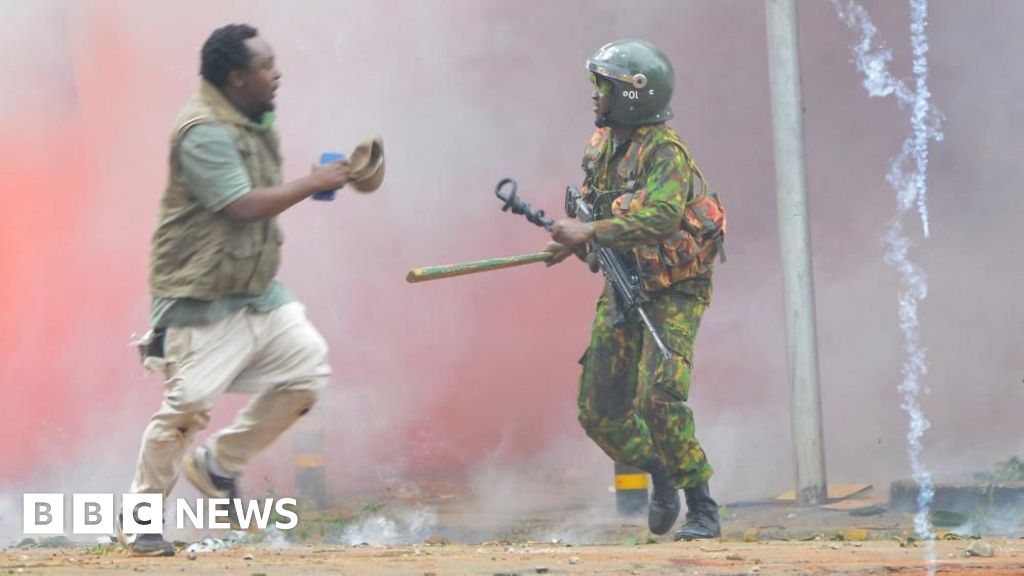At least eight killed and hundreds hurt as Kenya protesters battle police

Kenya Protests: Deaths and Injuries as Demonstrations Against Ruto Grip Nation
At least eight people have died and hundreds more have been injured in Kenya as protests against President William Ruto's government escalated across the country on Wednesday. Police used tear gas and water cannons in an attempt to disperse demonstrators in Nairobi and other major cities, marking the anniversary of similar deadly anti-government demonstrations in 2024.
The protests, fueled by rising cost of living concerns and dissatisfaction with government policies, saw thousands take to the streets, many chanting "Ruto must go" and carrying branches as symbols of peaceful resistance. The demonstrations come amidst a backdrop of economic hardship and growing public discontent.
Government Response and Court Intervention
Prior to the protests, the government attempted to ban live TV and radio coverage of the events, citing concerns about incitement and public order. However, this decree was swiftly overturned by the High Court in Nairobi, upholding the constitutional right to freedom of expression and the public's access to information.
President Ruto, speaking at a burial ceremony in Kilifi County, urged protesters to maintain peace and stability. "Protests should not be to destroy peace in Kenya. We do not have another country to go to when things go wrong. It is our responsibility to keep our country safe," he said, while notably absent from State House in Nairobi as protesters attempted to reach his official residence.
Casualty Figures and Accounts from the Ground
Official casualty figures have yet to be released by the government. However, a joint statement from the Kenya Medical Association, the Law Society of Kenya, and the Police Reforms Working Group reported at least eight deaths. They further stated that over 400 people were injured, with 83 requiring specialized treatment and eight suffering gunshot wounds. The injured also included three police officers, according to the statement. Amnesty Kenya has placed the death toll even higher, at 16.
One protester, Amina Mude, told the BBC she joined the demonstrations "to fight for the future of my kids." She added, "I feel like as a country we're not going in the right direction, especially in education and everything happening. I feel like it's high time that the country and the leadership listens to us."
Video footage from Nairobi showed tear gas filling the air, forcing protesters to scatter. Wreaths and handwritten notes commemorating victims of last year’s protests lined the fence around parliament, a stark reminder of the ongoing struggle for accountability.
Historical and Economic Context
These protests occur against a backdrop of persistent economic challenges in Kenya. The Ruto administration has implemented a series of fiscal policies, including tax increases, aimed at stabilizing the economy and reducing the national debt. However, these measures have been met with widespread criticism, particularly from low-income earners who argue they disproportionately bear the burden of these policies. This echoes previous instances of public unrest tied to economic reforms in Kenya's history.
Analyst Viewpoint Dr. Joy Mwendwa, a political analyst at the Institute for Development Studies at the University of Nairobi, notes that the current protests are a manifestation of deeper socio-economic grievances. "The government's austerity measures, while intended to improve the long-term economic outlook, have exacerbated the immediate struggles of ordinary Kenyans," she explains. "The lack of inclusive dialogue and perceived indifference from the government have further fueled public anger."
Echoes of Past Unrest
Kenya has a history of political protests, often triggered by economic hardship, electoral disputes, or governance issues. The 2007-2008 post-election violence, for instance, serves as a stark reminder of the potential consequences of unresolved political tensions. The current demonstrations, while primarily focused on economic concerns, also reflect a broader sense of disillusionment with the political establishment.
Expert Perspective Human Rights Watch has consistently raised concerns about police brutality and the use of excessive force during protests in Kenya. "Accountability for past abuses remains a significant challenge, and the government must ensure that law enforcement officials are held responsible for any violations of human rights during these protests," stated Otsieno Namwaya, a senior Africa researcher at Human Rights Watch.
The Road Ahead
The situation in Kenya remains tense. The government faces the challenge of addressing the immediate concerns of the protesters while also pursuing its long-term economic goals. A meaningful dialogue between the government and civil society, coupled with concrete measures to alleviate economic hardship, will be crucial in de-escalating the situation and preventing further unrest.
Originally sourced from: BBC News Africa
